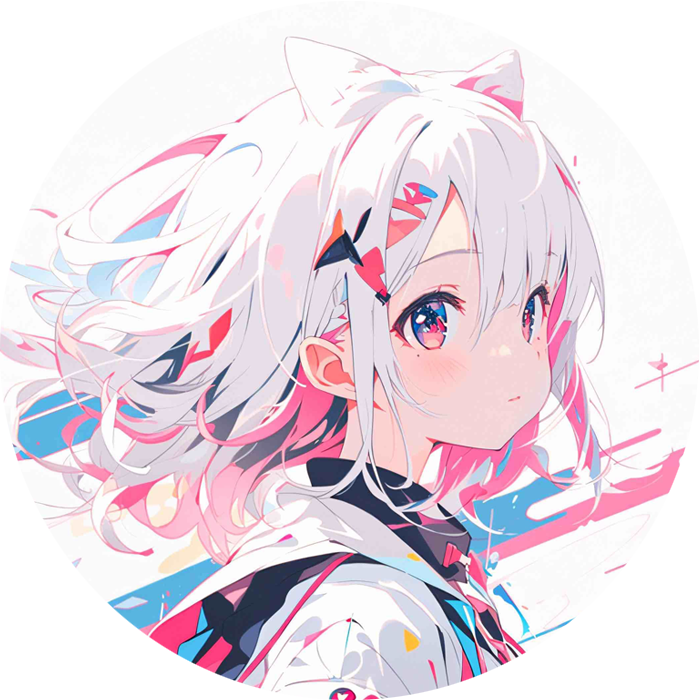NextJS入门案例
前提条件
知道TypeScript
友好的国际联网
不低于18的nodejs版本
良好的心态
启动示例项目
新建示例项目,执行:
npx create-next-app@latest nextjs-dashboard --example "https://github.com/vercel/next-learn/tree/main/dashboard/starter-example"执行后会拉取官方提供的示例项目,项目内文件夹解释:
/app: 包含项目所有的路由、组件和逻辑,我们的代码主要是写在这里面。/app/lib: 项目需要的一些可复用的函数或者说是一些工具类。/app/ui: UI组件,可以是手搓的公共组件也可以是像shadcn/ui生成的。/public: 静态资源目录。/scripts: 数据库初始化脚本。next.config.js: NextJS的配置文件。
安装依赖及启动项目:
pnpm install;pnpm dev浏览器打开http://localhost:3000
CSS样式
项目使用tailwindcss,对于css糕手而言这是非常方便的东西,示例项目已经在/app/ui/global.css和/tailwind.config.ts进行了相应的安装配置。
TIP
TailwindCSS 是一个 CSS 框架,可以在标签里面写类名直接实现样式定制,从而加快开发过程。
TailwindCSS 的每个类都单独应用于那个元素,不再需要去维护单独的样式表,不需要再去关心样式污染以及随着项目迭代导致css文件越来越大。
当你用 create-next-app 来创建新项目时,NextJS会询问是否要使用 TailwindCSS。如果选择 yes ,NextJS将自动安装并配置 TailwindCSS。
全局样式
但是进入页面后项目样式会非常奇怪,是因为全局样式没有引入,在/app/layout.tsx引入全局样式:
import '@/app/ui/global.css';
export default function RootLayout({
children,
}: {
children: React.ReactNode;
}) {
return (
<html lang="en">
<body>{children}</body>
</html>
);
}尝试用tailwindcss画一个三角形
INFO
复制下面的代码并将其粘贴到/app/page.tsx <p>标签的上方
<div
className="h-0 w-0 border-b-[30px] border-l-[20px] border-r-[20px] border-b-black border-l-transparent border-r-transparent"
/>CSS模块
如果不喜欢TailwindCSS,也可以写CSS样式作为模块进行导入,CSS模块可以将CSS类限定为组件,降低样式冲突的风险:
在/app/ui新建一个home.module.css文件:
.shape {
height: 0;
width: 0;
border-bottom: 30px solid black;
border-left: 20px solid transparent;
border-right: 20px solid transparent;
}导入/app/page.tsx并替换原有的TailwindCSS类名:
import AcmeLogo from '@/app/ui/acme-logo';
import { ArrowRightIcon } from '@heroicons/react/24/outline';
import Link from 'next/link';
import styles from '@/app/ui/home.module.css';
export default function Page() {
return (
<main className="flex min-h-screen flex-col p-6">
<div className={styles.shape} />
// ...
)
}使用 clsx 切换类名
假设用户未付款是灰色提示,用户已付款是绿色提示,这时候需要使用clsx来动态切换类名:
import clsx from 'clsx';
export default function InvoiceStatus({ status }: { status: string }) {
return (
<span
className={clsx(
'inline-flex items-center rounded-full px-2 py-1 text-sm',
{
'bg-gray-100 text-gray-500': status === 'pending',
'bg-green-500 text-white': status === 'paid',
},
)}
>
// ...
)}优化字体和图像
在异步Web设计中,对于字体,浏览器最初以系统默认字体呈现文本,然后在页面逐步加载完成后将其换成自定义字体时,就会发生布局偏移。这可能会导致文本大小、间距或布局发生变化,从而移动其周围的元素。
想象一下,在一个价值百万的订单场景下,点击取消的时候由于字体样式和布局的调整,导致确定按钮进行了位移,你幸运的点到了确定按钮~
使用 next/font 模块时,NextJS会在构建的时候下载字体文件,然后放到静态资源里面,当用户访问页面时,不会有额外的第三方网站字体资源请求。
使用 next/image 模块可以避免图片在加载前后导致的页面布局变动,可以响应式调整图片大小,默认情况下是懒加载(视口出现才加载),通过WebP和AVIF加载图片。
添加自定义 Google 字体
在/app/ui下新建一个fonts.ts文件:
import { Inter } from 'next/font/google';
export const inter = Inter({ subsets: ['latin'] });将字体添加到/app/layout.tsx的 <body>中:
import '@/app/ui/global.css';
import { inter } from '@/app/ui/fonts';
export default function RootLayout({
children,
}: {
children: React.ReactNode;
}) {
return (
<html lang="en">
<body className={`${inter.className} antialiased`}>{children}</body>
</html>
);
}再添加其它字体:
import { Inter, Lusitana } from 'next/font/google';
export const inter = Inter({ subsets: ['latin'] });
export const lusitana = Lusitana({
weight: ['400','700'],
subsets: ['latin']
});应用字体到/app/page.tsx的 <p>标签,取消掉<AcmeLogo />的注释:
import AcmeLogo from '@/app/ui/acme-logo';
import { ArrowRightIcon } from '@heroicons/react/24/outline';
import Link from 'next/link';
import styles from '@/app/ui/home.module.css';
import { lusitana } from '@/app/ui/fonts';
export default function Page() {
return (
<main className="flex min-h-screen flex-col p-6">
<div className="flex h-20 shrink-0 items-end rounded-lg bg-blue-500 p-4 md:h-52">
<AcmeLogo />
</div>
<div className="mt-4 flex grow flex-col gap-4 md:flex-row">
<div className="flex flex-col justify-center gap-6 rounded-lg bg-gray-50 px-6 py-10 md:w-2/5 md:px-20">
<div className={styles.shape} />
<p
className={`${lusitana.className} text-xl text-gray-800 md:text-3xl md:leading-normal`}
>
<strong>Welcome to Acme.</strong> This is the example for the{' '}
<a href="https://nextjs.org/learn/" className="text-blue-500">
Next.js Learn Course
</a>
, brought to you by Vercel.
</p>
<Link
href="/login"
className="flex items-center gap-5 self-start rounded-lg bg-blue-500 px-6 py-3 text-sm font-medium text-white transition-colors hover:bg-blue-400 md:text-base"
>
<span>Log in</span> <ArrowRightIcon className="w-5 md:w-6" />
</Link>
</div>
<div className="flex items-center justify-center p-6 md:w-3/5 md:px-28 md:py-12">
{/* Add Hero Images Here */}
</div>
</div>
</main>
);
}添加图片
NextJS可以直接引用在顶级 /public 文件夹下静态资产:
<img
src="/hero.png"
alt="Screenshots of the dashboard project showing desktop version"
/>但是需要额外去考虑以下问题:
确保您的图像在不同的屏幕尺寸上具有响应性。
为不同设备指定图像大小。
防止在图像加载时出现布局偏移。
懒加载用户视口之外的图像。
NextJS提供了<Image/>组件来解决以上问题,同时默认会将图片编码成WebP。
如果需要使用avif格式,在 /next.config.js 配置图片编码:
/** @type {import('next').NextConfig} */
const nextConfig = {
images: {
formats: ['image/avif'],
},
};
module.exports = nextConfig;TIP
AVIF 跟 WebP 相比会多用 20% 的时间来编码,但文件小了20%。第一次请求图片可能会较慢,然后缓存的后续请求会更快。
如果NextJS自行部署在代理/CDN,必须将代理转发 Accept 标头。
在/app/page.tsx导入next/image然后添加桌面端和移动端首页图片:
import AcmeLogo from '@/app/ui/acme-logo';
import { ArrowRightIcon } from '@heroicons/react/24/outline';
import Link from 'next/link';
import styles from '@/app/ui/home.module.css';
import { lusitana } from '@/app/ui/fonts';
import Image from 'next/image';
export default function Page() {
return (
<main className="flex min-h-screen flex-col p-6">
<div className="flex h-20 shrink-0 items-end rounded-lg bg-blue-500 p-4 md:h-52">
<AcmeLogo />
</div>
<div className="mt-4 flex grow flex-col gap-4 md:flex-row">
<div className="flex flex-col justify-center gap-6 rounded-lg bg-gray-50 px-6 py-10 md:w-2/5 md:px-20">
<div className={styles.shape} />
<p
className={`${lusitana.className} text-xl text-gray-800 md:text-3xl md:leading-normal`}
>
<strong>Welcome to Acme.</strong> This is the example for the{' '}
<a href="https://nextjs.org/learn/" className="text-blue-500">
Next.js Learn Course
</a>
, brought to you by Vercel.
</p>
<Link
href="/login"
className="flex items-center gap-5 self-start rounded-lg bg-blue-500 px-6 py-3 text-sm font-medium text-white transition-colors hover:bg-blue-400 md:text-base"
>
<span>Log in</span> <ArrowRightIcon className="w-5 md:w-6" />
</Link>
</div>
<div className="flex items-center justify-center p-6 md:w-3/5 md:px-28 md:py-12">
{/* Add Hero Images Here */}
<Image
src="/hero-desktop.png"
width={1000}
height={760}
className="hidden md:block"
alt="Screenshots of the dashboard project showing desktop version"
/>
<Image
src="/hero-mobile.png"
width={560}
height={620}
className="block md:hidden"
alt="Screenshots of the dashboard project showing mobile version"
/>
</div>
</div>
</main>
);
}